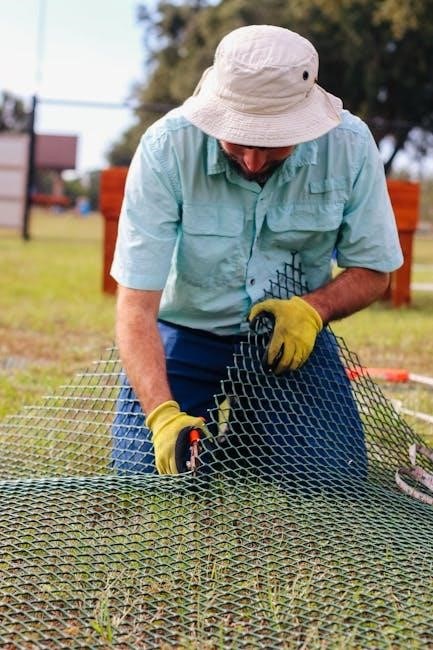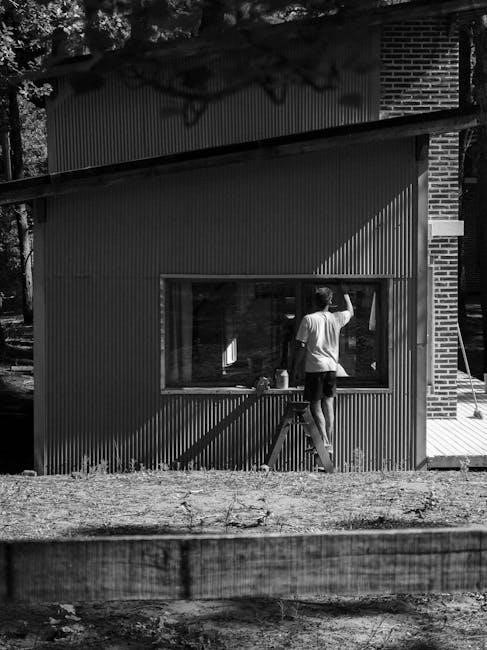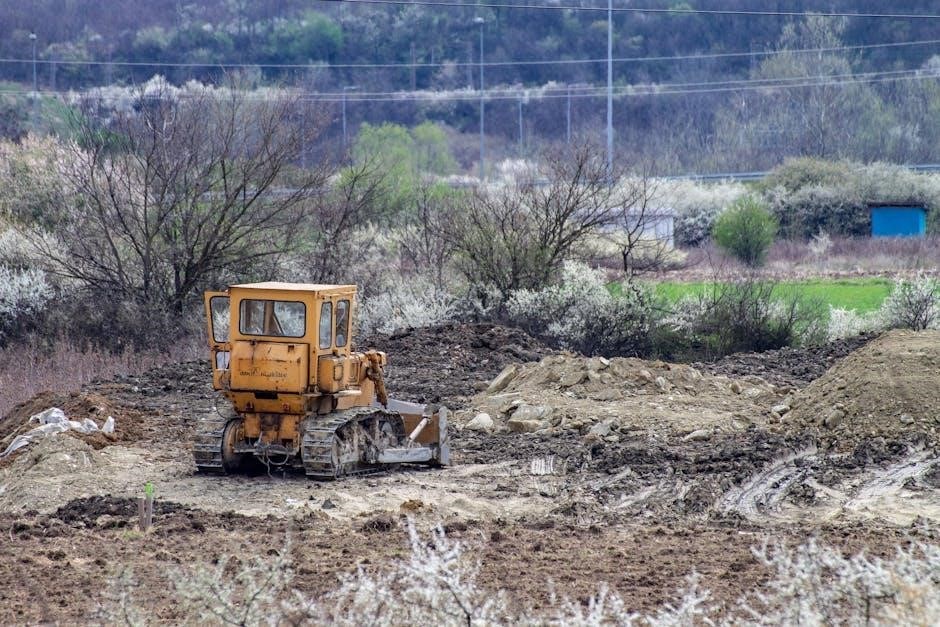
resources and guidelines to ensure proper construction and access to clean water sources effectively always.
Overview of the Spring Construction Manual
The spring construction manual for Uganda is a comprehensive guide that provides detailed instructions on the construction of springs, including site selection, design, and construction techniques, using a variety of methods and materials.
The manual is designed to be customizable, allowing users to tailor the guidelines to meet their specific needs and requirements.
It covers topics such as optimal timing, weather considerations, and material sourcing, as well as regulatory compliance and sustainable practices.
The manual is intended for individuals and organizations involved in water resource development and community-based projects, and is written in a clear and concise manner, making it accessible to a wide range of users.
The manual also includes information on the importance of proper spring construction, including the impact on access to clean water and sanitation, and the role it plays in addressing water challenges in Uganda, with various alternatives.
Overall, the spring construction manual for Uganda is a valuable resource for anyone involved in spring construction in the country, providing a comprehensive and practical guide to ensuring the construction of safe and sustainable springs.

Importance of Spring Construction in Uganda
Spring construction in Uganda is crucial for improving access to clean water, using
- local
resources and guidelines to support community development and economic growth effectively always with care.
Addressing Water Challenges and Improving Access to Clean Water
The construction of springs in Uganda plays a vital role in addressing the country’s water challenges, with a focus on improving access to clean water sources for communities in need. Using a comprehensive spring construction manual for Uganda, individuals and organizations can work together to develop sustainable water solutions; This involves implementing effective
- water management
- conservation
- protection
strategies to ensure the long-term availability of clean water. By promoting proper spring construction techniques and practices, Uganda can reduce the risk of water-borne diseases and improve the overall health and well-being of its citizens. Furthermore, access to clean water is essential for supporting economic growth, agricultural development, and community development initiatives, ultimately contributing to a more prosperous and sustainable future for Uganda. Effective spring construction is a critical step towards achieving this goal.

Key Considerations for Spring Construction
Key considerations include
- site selection
and design to ensure proper construction always effectively.
Optimal Timing, Weather Considerations, and Material Sourcing
Optimal timing is crucial for spring construction in Uganda, considering the country’s weather patterns and material sourcing, using local and available resources to minimize costs and environmental impact, ensuring project sustainability and effectiveness, with a focus on community-based projects, and proper planning and execution, to achieve the desired outcomes, and provide clean water access, which is essential for the well-being of the communities, and the construction process, including the selection of materials, and the timing of the construction, to avoid any potential risks, and ensure the success of the project, and the benefits of the spring construction, will be realized, and the community will have access to clean and reliable water sources, which is the main goal of the spring construction manual for Uganda, and the key to improving the lives of the people.

Regulatory Compliance and Sustainable Practices
Regulatory compliance and sustainable practices are essential for spring construction in Uganda, using
- environmental
guidelines and standards to ensure safety and effectiveness always.
Ensuring Safety Regulations and Environmental Sustainability
Ensuring safety regulations and environmental sustainability is crucial for spring construction in Uganda, involving adherence to guidelines and standards that prioritize environmental protection and community well-being, using resources effectively, and minimizing potential risks and hazards associated with construction activities, while also promoting sustainable development and improved quality of life, through the implementation of proper safety protocols and environmentally friendly practices, as outlined in the spring construction manual for Uganda, which provides detailed information and guidance on how to ensure safety and sustainability in spring construction projects, including the use of appropriate materials and techniques, and the importance of community involvement and participation in the construction process, to guarantee the long-term success and benefits of the project, and to ensure that the constructed springs are safe, reliable, and sustainable, and provide clean water to the communities, thereby contributing to the overall development and growth of the region.
Benefits and Challenges of Spring Construction in Uganda
Spring construction in Uganda offers benefits and poses challenges, requiring careful planning and execution using
- guidelines
and resources effectively always.
Economic Impact and Community Development
The economic impact of spring construction in Uganda is significant, as it provides employment opportunities and stimulates local economies, contributing to community development and growth, with benefits accruing to individuals and communities, and playing a crucial role in improving living standards and reducing poverty, using resources and guidelines effectively, and ensuring that spring construction projects are implemented in a way that maximizes their economic benefits, while also promoting community development and social welfare, and contributing to the overall development of Uganda, with a focus on sustainable development and improved quality of life, and using spring construction as a means of achieving these goals, and making a positive impact on the lives of people in Uganda, and helping to address the country’s development challenges.
